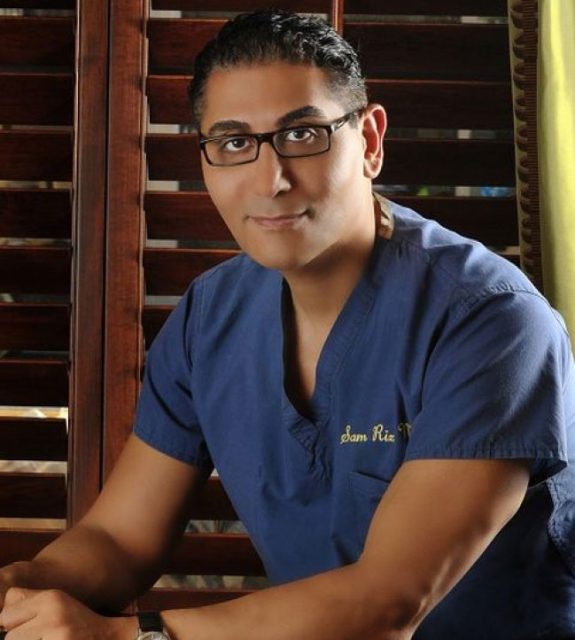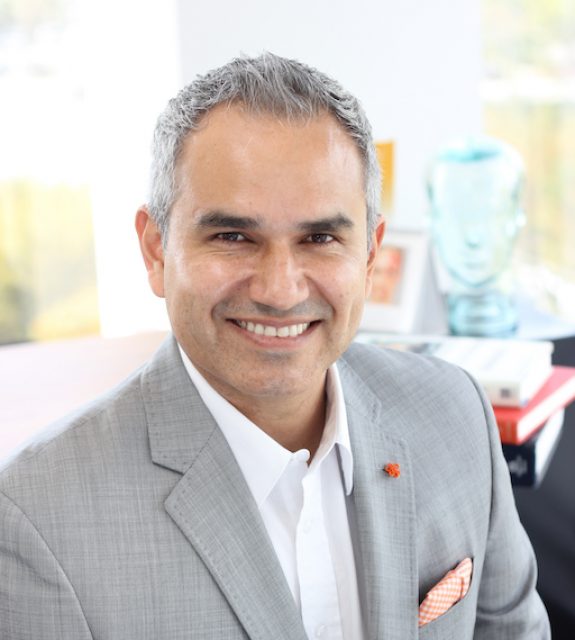
For many reasons, laser resurfacing is a haute topic, but have you ever wondered how experts like Dr. Cameron Rokhsar found themselves involved in developing several laser systems? Haute Beauty spoke with Haute Beauty expert Dr. Rokhsar to learn more; here's what we found out.
The Begging of It All
It all started back when Dr. Rokhsar started his laser surgery fellowship with the late Dr. Richard Fitzpatrick. Does the name Fitzpatrick sound familiar to you? Well, you've probably heard it while you were learning about skin types. Dr. Fitzpatrick, a legendary dermatologist, is the legend who is credited with the invention of laser surfacing. In fact, he was the first who took the CO2 laser, which at the time was only being used in gynecology to treat vaginal and cervical lesions, and adapted it to treat skin wrinkles and scars.
While Dr. Rokhsar was learning the intricacies and the art of CO2 laser resurfacing during his laser fellowship, he and Dr. Fitzpatrick also began working on a new paradigm, called fractional laser resurfacing with the Fraxel laser. This was a brand new concept in laser resurfacing where instead of resurfacing the surface of the skin in its entirety at once, the laser places an array of microscopic laser dots throughout the skin, which, when added all together, adds up to 30 to 50 percent of the skin. This process needs to be repeated a few times. The advantage is faster healing and fewer side effects.
As Dr. Rokhsar did most of his clinical trials that led to the development and FDA approval of the Fraxel laser, he went on to teach the principles and techniques of the new concept in laser resurfacing to physicians throughout the world.
Continued Education
Fractional laser resurfacing with the Fraxel laser has become the number-one laser resurfacing procedure in the world since its inception. As mentioned, Dr. Rokhsar worked on many of the trials which led to the FDA approval of the Fraxel laser system, including the treatment of wrinkles, acne scars, sun spots/sun damage and melasma. Following the FDA approval of the Fraxel laser, he embarked on a 6-week tour of various countries to teach doctors around the world about the Fraxel laser. He introduced the Fraxel laser to Europe in England and Germany, to South America in Brazil, Colombia, and Argentina, and to Asia in Japan, Hong Kong, Taiwan, Korea, The Philipines, Indonesia, Malaysia and Thailand.

The Benefits of Laser Resurfacing
Laser resurfacing has revolutionized the treatment of many conditions in Dermatology. The treatment of deep lines and wrinkles has been revolutionized through the use of the CO2 laser. There is no other procedure that can come close to the results we can achieve with the CO2 laser for wrinkles. Around the eyes, for example, we can get surgery-like results. For wrinkles around the mouth, there is nothing that comes close to the results of the CO2 laser. Fractional resurfacing with the Fraxel laser has revolutionized the treatment of acne scars, pores, melasma, stretch marks, and many other conditions where we did not have good treatment options prior. The gold standard for the treatment of many of these conditions is now the Fraxel laser.
How it Differs From CO2 Laser Resurfacing
The CO2 laser is an ablative laser, which means that it evaporates tissue. In fractional mode, Dr. Rokhsar is evaporating tiny microscopic zones in your skin. This process causes some oozing and crusting. There is about a one-week medical downtime with ablative fractional CO2 laser resurfacing.
The Fraxel laser is a non-ablative fractional laser. This means that it does not ablate or evaporate tissue. So, there is no oozing or crusting, only redness and peeling. The recovery is much easier and there is no true medical downtime, only social downtime. Patients can put makeup on immediately after, shave, and carry on with their everyday life. Dr. Rokhsar prefers fractional CO2 laser resurfacing for moderate to deep wrinkles, and the Fraxel laser for fine lines, sun damage, acne scars, surgical scars and melasma. The fractional CO2 laser can be used effectively for the treatment of burn scars. The Fraxel laser is also the only laser that is fully safe to treat off the face.
Downtime of Laser
The fractional CO2 laser, when done for optimal results, has 5 to 7 days of true downtime. During this time, you cannot go to work, the gym, or carry on with normal social activities. Dr. Rokhsr calls this true medical downtime. A Fraxel laser treatment depending on the condition being treated, and the setting used, can have 1 to 7 days of social downtime, but not true medical downtime. With the Fraxel laser, redness, swelling, and peeling of various degrees can be expected, akin to a sunburn. But one can still continue with daily routine activities, can put on make-up, and go to the gym. However, it's best to time it two weeks prior to any major social event.
























